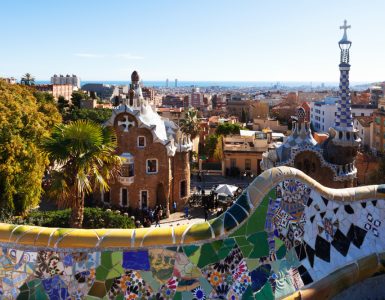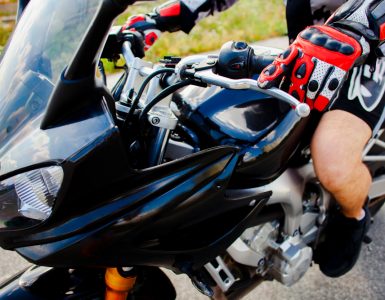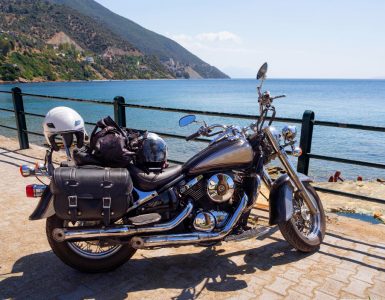Looking to travel to Spain? Here’s everything you need to know about transportation in the country! From getting buses from Madrid to renting a car or taking a scenic train ride through the countryside, we’ve got you covered.
Booking Public transportation in Spain
This search engine makes booking public transportation in Spain easy:
With the search engine, you can compare and book trains, buses, ferries and flights in Spain, all in one place. You can also find out information about routes, schedules, and prices, and read reviews from other travelers.
Which is the best way to get around Spain?
There are a few different ways to get around Spain, and the best way depends on your budget and where you’re going. If you’re just visiting a few cities, then the train or bus system is probably your best bet. If you’re planning on exploring more of the countryside, then renting a car is probably your best option. Just make sure to research public transportation in Spain before you hit the road!
Public transportation in Spain
Spain is a large country with many different regions, each with its own unique transportation system. The public transportation system in Spain is very efficient and can be used to get around the country easily. There are several different types of public transportation in Spain, including buses, trains, and metros.
The bus system in Spain is extensive and can be used to reach almost any destination in the country. Tickets can be purchased at most bus stations or directly from the driver. Bus schedules are usually posted at stops, making it easy to plan your trip.
The train system in Spain is also very efficient and can be used to travel between cities quickly. Train tickets can be purchased at train stations or online. Train schedules are typically posted at stations, making it easy to plan your trip.
The metro system in Spain is mostly located in the major cities, such as Madrid and Barcelona. Tickets can be purchased at metro stations or directly from the driver. Metro schedules are typically posted at stops, making it easy to plan your trip.
Trains in Spain
Spain is a large country with a very efficient and extensive train network. Trains are a popular way to travel between cities in Spain. They are fast, comfortable, and relatively inexpensive.
The Spanish train system is operated by Renfe. There are several different types of trains that operate on different routes. The AVE (Alta Velocidad Española) is the high-speed train that operates on the major routes between the largest cities. These trains can reach speeds up to 350 km/h (217 mph) and are very comfortable with plenty of leg room, food and drink service, and power outlets.
The other main type of train in Spain is the regional train which operates on less busy routes at slower speeds. These trains are still comfortable and offer a great way to see the countryside as you travel between destinations.
Buses in Spain
Spain has an extensive bus network that can get you just about anywhere you need to go. Long-distance buses are comfortable and reasonably priced, making them a popular option for travelers. You can purchase tickets using the search engine for public transportation in Spain (above) or at the station. Keep in mind that bus schedules can vary depending on the time of year and the region you’re visiting.
If you’re planning on taking a bus in Spain, here are a few things to keep in mind:
-Buses are generally comfortable and safe form of public transportation in Spain.
-You can often find discounts on ticket prices if you book in advance.
-It’s important to check the schedule ahead of time, as buses can be less frequent in some areas.
-Be aware of your belongings while on the bus, as pickpockets are known to target tourists.
Car hire in Spain
If you’re planning a trip to Spain, then you might be considering hiring a car. After all, what better way to explore this beautiful country than by road? Spanish roads are generally good quality and well-signposted, so driving here is usually a pleasurable experience.
Many first-time visitors to Spain are surprised at just how challenging it can be to get around without a car.
Car hire in Spain is therefore a popular option for travelers who want the freedom and flexibility to explore at their own pace. While renting a car in Spain is relatively straightforward with the peice comaperison engine for car hire in spain, there are a few things to keep in mind in order to make the most of your experience.
To start with, it’s important to know that Spanish drivers tend to be very aggressive. This means that you should expect a lot of honking and fast driving, especially in larger cities. If you’re not used to this, it can be quite daunting – but as long as you stay calm and focused, you’ll be fine.
Another thing to keep in mind is that parking can be very difficult to find – and very expensive when you do find it. If possible, try to avoid driving into city centers, and instead use public transportation or taxis to get around.
Finally, make sure you have a good map of the area you’ll be visiting. While GPS systems are becoming increasingly common, they don’t always work well in Spain, so it’s always good to have a backup plan.
Tips for using transportation in Spain
1. When travelling in Spain, be sure to have your travel documents and tickets ready. This will help to avoid any delays or problems when using public transportation.
2. If you are planning on using public transportation regularly during your stay, it is recommended to purchase a Spanish travel card. This will give you discounts on fares in public transportation in Spain and make using the system much easier.
3. Be aware of pickpockets when using public transportation in Spain, particularly in busy areas such as Barcelona or Madrid. Keep your belongings close to you and be vigilant of your surroundings.
4. If you are driving in Spain, be aware of the different rules of the road compared to other countries. For example, drivers must yield to pedestrians at all times, even if they are not crossing at a designated crosswalk.
5. Finally, enjoy your travels! Spain has an excellent transportation system that can easily get you around the country to see all the amazing sights it has to offer.
Domestic flights in Spain
There are a few different airlines that fly domestically within Spain, and they are Iberia, Vueling, Ryanair, and EasyJet. Use the link to book domestic flights in Spain
Iberia is the national carrier for Spain, and flies to the most destinations within the country. Vueling is a low-cost carrier that also has a good amount of domestic routes. Ryanair is a low-cost carrier that flies to many destinations in Europe, but also has a few domestic routes within Spain. EasyJet is another low-cost carrier that flies to many destinations in Europe, but also has a few domestic routes within Spain.
When flying domestically within Spain, it is important to know that there are two main airports that handle the majority of flights. These airports are Barcelona–El Prat Airport and Madrid–Barajas Airport. Barcelona–El Prat Airport is the second busiest airport in Spain, and is located just outside of Barcelona. Madrid–Barajas Airport is the busiest airport in Spain, and is located just outside of Madrid.
If you are planning on flying domestically within Spain, be sure to check out all of the different airlines to see which one has the best prices and routes for your travel needs!
Ferries in Spain
Spain is a large country with many different regions, each with their own unique transportation options. Ferries are one option for travel between the mainland and the islands, and they are also a popular way to travel between Spain and its neighboring countries.
Use the link to book ferries in Spain
There are many different ferry companies that operate in Spain, so it is important to do some research before booking a ticket. Prices can vary depending on the route, the time of year, and the company you choose. It is also important to keep in mind that ferries can be subject to delays or cancellations due to weather conditions.
When traveling by ferry in Spain, be sure to bring your passport and any other required documents. Most companies will have a luggage limit, so it is important to pack light if possible. And finally, relax and enjoy the ride! Ferry travel is a great way to see the beautiful coastline of Spain.
Taxis in Spain
If you’re planning on travelling to Spain, it’s important to know a thing or two about the country’s transportation system – especially when it comes to taxis. Here’s everything you need to know about taxis in Spain, from how to hail one to what the fare will cost you.
Hailing a Taxi in Spain: In most Spanish cities, you can hail a taxi either on the street or at a taxi stand. To hail a taxi on the street, simply hold your arm out and wave down an available taxi. If there’s no taxis available on the street, head to a nearby taxi stand and wait in line for the next available taxi.
When you’re ready to take your ride, give the driver your destination and hop in. Don’t forget to buckle up!
Taxi Fares in Spain: The cost of your taxi ride will depend on a few factors, including the time of day, distance travelled, and any tolls along the way. That said, you can expect to pay around €1-2 per kilometre during daytime hours, with rates increasing slightly after 10pm. Longer rides will also come with a surcharge, so be sure to ask your driver for anestimate before you get in the car.
Taxi Tips in Spain: While tipping is not required, it is always appreciated by your driver. A good rule of thumb is to round up to the nearest euro – so if your fare comes to €12.50, give the driver €15.
AIrport Transfers in Spain
Spain is a big country with a lot to see. The best way to get around is by car, but that can be expensive and stressful. The next best thing is public transportation, but that can be confusing and difficult to navigate. The best way to get from the airport to your hotel or resort is by private airport transfers in Spain with kiwitaxi.
How to get from the airport to your hotel
Assuming you’re flying into Barcelona’s El Prat airport, there are a few options for getting to your hotel.
The first is to take a taxi. There will be plenty of taxis waiting outside the arrivals terminal, and the journey into the city centre should take around 30 minutes and cost around €30. Just be sure to only use an official taxi, as there have been reports of unlicensed drivers overcharging tourists.
Another option is to take the Barcelona Airport Bus. This is a dedicated shuttle bus which runs between the airport and various points in the city centre, and costs €5.90 for a one-way ticket. The journey time is around 40 minutes.
If you’re feeling adventurous, you could also try the Barcelona Metro. The nearest station to the airport is called “Aeroport T1” and is on Line 9. A single journey into town costs €4.50 and takes around 55 minutes.
Flights to Spain
Spain is a top destination for travelers from all over the world. Whether you’re looking to soak up some sun on the beaches of the Mediterranean, explore the stunning architecture and museums of Madrid, or experience the unique culture of Barcelona, there’s something for everyone in this beautiful country.
The best way to get to Spain is by flying into one of its major airports. Madrid-Barajas Airport and Barcelona Airport are the busiest in the country, but there are also many smaller airports that serve popular tourist destinations like Alicante, Malaga, and Valencia.
If you’re planning a trip to Spain, be sure to check out our guide on flights to Spain. We’ve got all the information you need.
Booking 2 wheeler rental in Spain
Spain is a beautiful country with a lot to offer visitors. One of the best ways to see Spain is by renting a bike or scooter and exploring on two wheels. However, there are a few things you need to know before you book your 2 wheeler rental in Spain.
First, make sure to book your rental in advance. This will ensure that you get the bike you want and that it’s available when you need it.
Second, be aware of the different types of bikes available for rent. There are road bikes, mountain bikes, and electric bikes available. Choose the type of bike that best suits your needs.
Third, be sure to familiarize yourself with the local traffic laws before you hit the road. Spain has some unique traffic laws, so it’s important to know what you can and can’t do before you start riding.
fourth, consider renting from a company that offers insurance. This will protect you in case of an accident or if your bike is damaged while you’re using it.
Finally, have fun! Renting a bike is a great way to see Spain and experience the country in a unique way.
Scooter rental in Spain
Spain is a renowned tourist destination for many reasons: its stunningly well-preserved architecture and historical landmarks, Mediterranean atmosphere, diverse landscape, tasty food, and passionate culture. But one of the best things about Spain is its excellent transportation system that makes getting around the country a breeze – especially if you rent a scooter!
Renting a scooter in Spain is relatively easy and affordable, and it’s a great way to see the country at your own pace. Just make sure you have a valid driver’s license and international insurance, as well as a few extra euros for gas. Once you have all of that sorted, hit the open road and enjoy the ride!
Bicycle rental in spain
Spain is a great country for bicycling, with plenty of good weather and beautiful scenery. Bike rental in Spain is available in most cities and towns, and it’s easy to find a route that suits your level of fitness.
Whether you’re looking for a leisurely ride through the countryside or a challenging climb up a mountain pass, there’s a bike trail for you in Spain. Here are some of the best routes to try:
– The Camino de Santiago is a popular pilgrimage route that runs all the way from France to Santiago de Compostela in northwestern Spain. It’s well signposted and mostly flat, making it ideal for beginner cyclists.
– For something more challenging, head to Andalusia in southern Spain and cycle through the stunning Sierra Nevada mountains. There are plenty of mountain passes to test your legs, and the views from the top are incredible.
– If you’re really fit, try cycling up Mount Teide on Tenerife, the highest mountain in Spain. It’s a tough climb but the rewards are worth it, with incredible views from the summit.
Motorcycle rental in spain
If you’re planning a trip to Spain, motorcycle rental is a great option for getting around and seeing the country’s many sights. Here’s everything you need to know about motorcycle rental in Spain.
There are plenty of reputable motorcycle rental companies in Spain, so you’ll have no trouble finding one that suits your needs. Be sure to research the company thoroughly before making a reservation, as some have better reviews than others. Once you’ve found a reputable company, make sure you have all the necessary documents in order: a valid driver’s license, passport, and credit card. Some companies may also require additional documentation, so be sure to ask about this in advance.
When it comes to choosing a motorcycle, there are a few things to keep in mind. First, consider what type of terrain you’ll be riding on: if you’re sticking to city streets and highways, a smaller bike should suffice; but if you’re planning on doing some off-roading, you’ll need something more powerful. Second, think about how many people will be
Quad bike rental in spain
Looking for an exciting way to see the sights in Spain? Why not rent a quad bike! This is a great way to get around and see the country, especially if you’re adventurous and want to go off the beaten path. There are many quad bike rental companies in Spain, so be sure to do your research before booking.
What is the main transportation in Spain?
Spain is a large country with many different types of transportation. The most common form of transportation is the car. Spain has an extensive network of highways and roads that make getting around the country relatively easy. However, there are also a number of other transportation options available, including trains, buses, and planes.
Trains are a popular option for travel between major cities in Spain. The high-speed AVE train can get you from Madrid to Barcelona in just over three hours. Buses are also a common form of transportation, particularly for shorter trips. There are many bus companies that operate throughout Spain, making it easy to find a bus that goes to your desired destination.
For longer distances, flying is often the best option. Spain has several major airports, including Barcelona-El Prat Airport and Madrid-Barajas Airport. There are many different airlines that operate flights within Spain and to other countries around the world.
What do people in Spain use for transportation?
There are many types of transportation in Spain, from the high-speed AVE trains to the more traditional methods like buses and taxis. But what do people use on a daily basis?
For many, the answer is the metro. Madrid and Barcelona both have extensive underground rail networks that make getting around these cities a breeze. The metro is also relatively cheap, with a single ride costing just a few euros.
Of course, not everyone lives in a city with a metro system. For those in smaller towns and villages, buses are the main form of public transport. Spanish buses are typically comfortable and reliable, although they can be slow when travelling between towns and cities.
For those who want more freedom, hiring a car is always an option. Spain has an excellent network of roads, making it easy to get from one place to another. Just be prepared for some heavy traffic in the larger cities!
How do you get around in Spain?
Public transportation in Spain is very efficient and affordable. The country has an extensive network of buses, trains, and metros (subways). If you’re planning to visit multiple cities during your trip, consider buying a Spanish Rail Pass, which allows you to travel on all of Spain’s trains at a discounted rate.
If you’re renting a car during your trip, be aware that Spain has a few unique driving rules. For example, cars must yield to pedestrians at unmarked crosswalks, and drivers must always carry a copy of their driver’s license and registration with them.
Spain also has a strong tradition of bicycling, both for recreation and transportation. If you’re planning to do any biking during your trip, familiarize yourself with the country’s bike laws before hitting the road.
Whatever your transportation needs, there’s sure to be a good option for you in Spain. With a little planning ahead, you can make getting around the country a breeze.
Does Spain have good public transportation?
Spain is known for its good public transportation, especially in larger cities. Madrid and Barcelona both have extensive metro systems that are efficient and affordable. Bus service is also good in Spain, with many routes connecting different parts of the country. Overall, public transportation in Spain is a great option for getting around, whether you’re visiting a big city or exploring the countryside.











Add comment